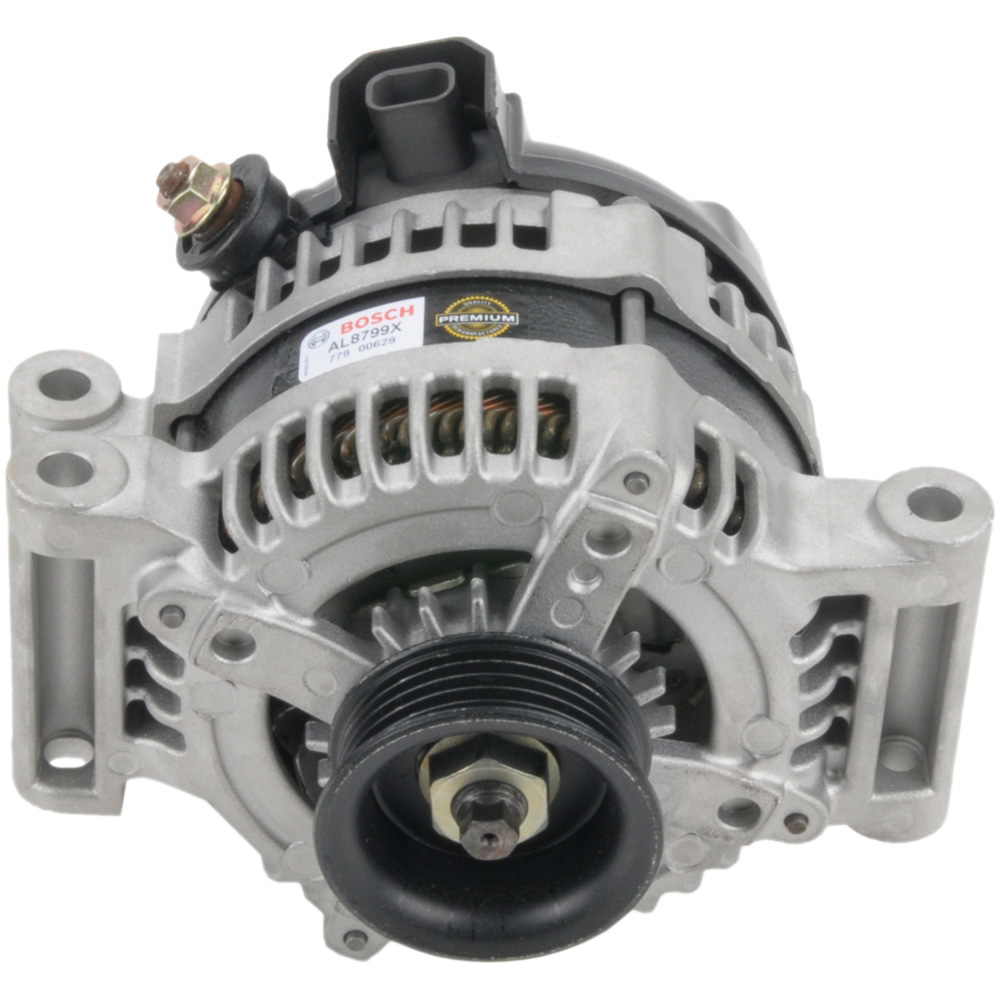

Of course, the way the vehicle indicates a problem is different depending on the root cause. Some points of failure affecting the alternator are bad bearings (which allow the rotor to spin freely) causing the rotor to seize, problems with the coils, and a bad belt (the rotor doesn’t spin right, so the alternator isn’t powered). Several terminals on the back of the unit connect the alternator to the electrical system in order to turn it off and on and send data from sensors to the ECU. Since cooling is critical to the proper function of an alternator, there are vents on the front and back to dissipate heat and cooling fans that are also powered by the serpentine belt. In newer vehicles, the ECU does this job. This can harm the battery or other electrical components. Older vehicles have a voltage regulator between the alternator and the battery to make sure the battery doesn’t get too little or too much electricity. As the rotor spins, the magnetic flux generated creates alternating current in the copper wire.Īt the other end of the alternator, a diode (also known as rectifier) converts the AC power into DC power which is the format that can actually be used by the vehicle and stored in the battery.

This makes three times the electricity as one set would.

Most often vehicles use a three-phase assembly, where there are three sets of copper coils spaced 120 degrees out of phase of each other. The stator assembly is made up of a system of copper coils. This power comes from an external power source or from small generators attached to self-excited alternators. As the poles move in this way, magnetic flux is generated.īrushes, which produce the magnetic field in each pole, are located near the poles and send them a direct current via slip rings around the prime mover. The rotor is powered by the turning crankshaft of a running engine via a belt (usually the serpentine belt in modern vehicles), which connects to the prime mover and turns the entire rotor (following the previous example, the flower spins). These magnetic poles alternate North and South. The rotor has roughly 10 to 20 magnetic poles sticking off of a center prime mover like petals of a flower growing off of a stem. The housing is made of aluminum because it cannot be magnetized and dissipates heat well. And when that noise is rattling, it may be the compressor.This coconut-sized part usually sits near the top of the engine and consists of an outer housing covering a stator and rotor. So, when you hear a noise, get it looked at. If the AC compressor is broken, you may hear a rattling noise, due to the compressor being loose, around. If it makes more noises, you might have some issues on your hands. Your car should generally make two noises: The sound of the engine, and whatever you're blasting through the stereo. Then you’ll get warm air, which isn’t so great on a sunny summer day. When the AC compressor’s life is over, your air conditioning system won’t have a way of cooling down the air that it’s sending into your cabin. But that’s exactly what might happen if your AC compressor is busted.

Things get complicated when you ask for cold air and get hot air.


 0 kommentar(er)
0 kommentar(er)
